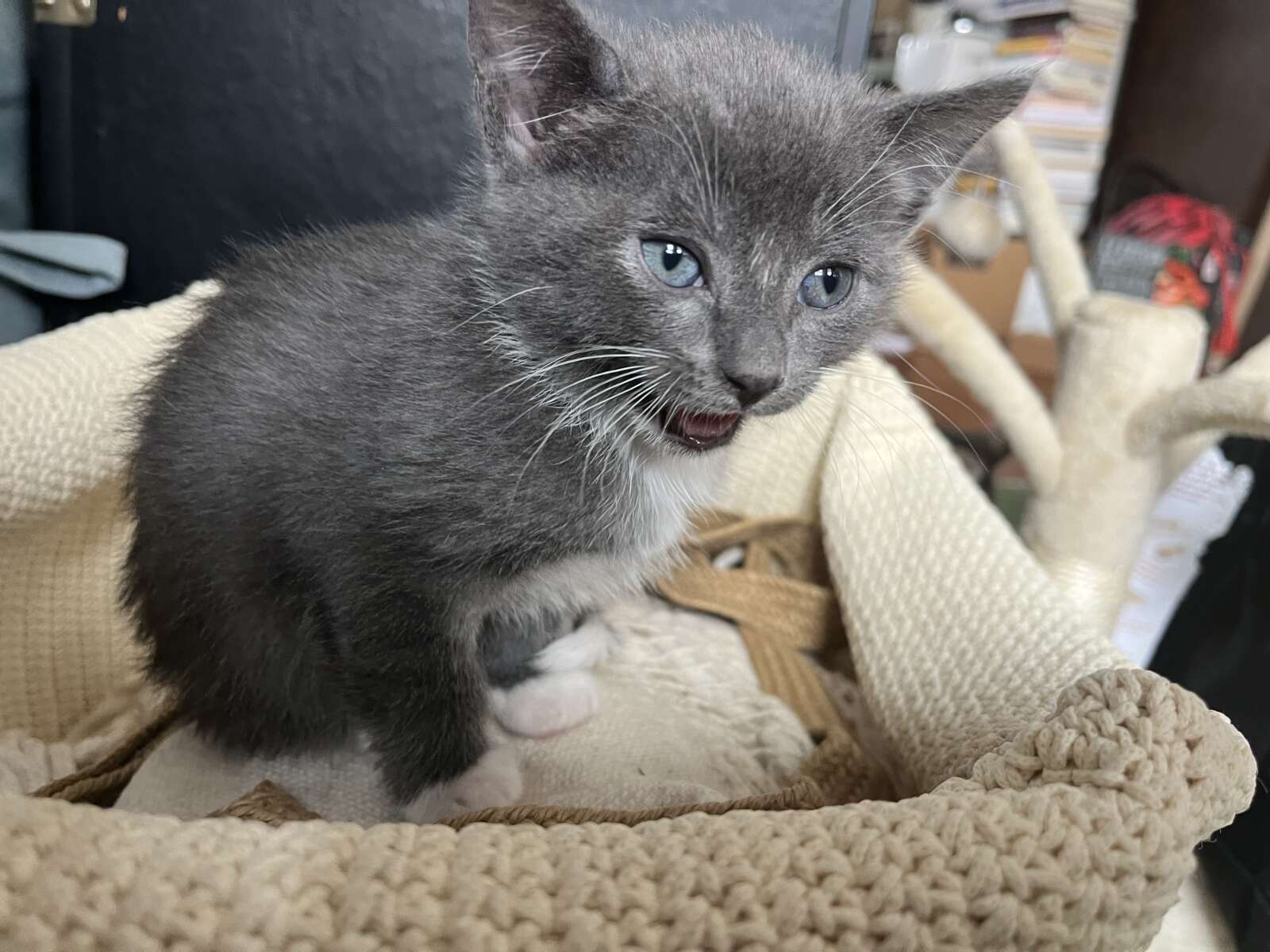
This is a sponsored post by veterinarian Elizabeth Arguelles, owner of Just Cats Clinic at Lake Anne Plaza. She writes weekly on Reston Now.
Feline leukemia virus (FeLV) is an infectious virus that affects cats around the world. While we hear a lot about feline leukemia, the prevalence in the United States is actually only approximately 2 to 3 percent. It tends to appear more frequently in cats who are very ill, who are still kittens or whose immune systems have been compromised. About 13 percent of those cats have FeLV.
What is feline leukemia?
As was mentioned above, FeLV is an infectious virus, not cancer as it names suggests. The name comes from the fact that when it was first discovered in cats, it was in the form of leukemia cells.
When the cat is infected, a retrovirus produces an enzyme called reverse transcriptase that allows the virus to insert copies of its own genetic material into the infected cells. Though FeLV is not cancer, the resulting changes to the cells can potentially make them cancerous. The cancer can occur in a variety of tissues, organs and body sites, depending on where in the body the infected cells are located.
They can also affect circulating white blood cells or other cells of the blood-forming tissues. The most common type of cancer associated with feline leukemia is lymphosarcoma or cancer of the lymphoid cells.
Although cancer can develop as a result of FeLV, the virus can lead to other conditions as well, such as a suppressed immune system, life-threatening anemia, severe enteritis, severe dental disease, neurological disorders and eye diseases.
FeLV is specific to members of the cat family and cannot spread to humans or other species of animals.
How is FeLV transmitted?
Cat-to-cat contact is the most common way the virus is transmitted. The virus is shed from an infected cat in large quantities in the saliva, nasal secretions, urine, feces and mother’s milk. Mutual grooming, sharing of food and water bowls, or bite wounds are other ways the virus is transferred from one cat to another.
Are there cats that are at greater risk of infection?
Yes. The following cats are more likely to get FeLV:
- Cats exposed to infected cats, either through prolonged close contact or bite wounds. These include cats living with other infected cats and those who spend time outside.
- Kittens with FeLV-positive mothers
What happens when my cat is exposed to FeLV?
Potentially nothing. Not every cat exposed to FeLV will actually develop an infection. Many are able to build immunity to the virus. As a result, about 30 percent of cats that are exposed successfully eliminate the virus from their bodies over a matter of weeks. The other 70 percent are not able to fight off the infection and become permanently infected.
If your cat is infected, it may be months or years before any of the related clinical diseases become evident. Those disorders may include:
- Loss of appetite
- Slow but consistent weight loss
- Poor coat sheen
- Persistent fever and enlarged lymph nodes
- Gingivitis and stomatitis
- Urinary and upper respiratory infections
How is FeLV diagnosed?
Your vet can perform a rapid blood test, which will detect FeLV viral proteins in an infected cat. The test is very accurate, and false positives are rare. However, in some of the cats that develop an immunity, the first test will still be positive. That is why your vet will perform a second test 8-12 weeks later to confirm the initial diagnosis.
How is FeLV treated? Can it be cured?
At the moment, there is no specific treatment that eliminates the virus from the cat’s body. As a result, FeLV usually leads to diseases that are fatal. Studies have shown that cats infected with the virus generally die within three to four years of the initial diagnosis.
However, even if your cat has been diagnosed with FeLV, you and your vet can work on an effective treatment and maintenance plan to help your feline friend. Early diagnosis and aggressive symptomatic treatment of the FeLV-related diseases can lead to some improvement in the cat’s overall condition, at least temporarily.
Can FeLV be prevented?
Fortunately, there are simple things you can do to prevent your cat from ever getting FeLV. For example, there is a vaccine that protects a cat against FeLV infection. Talk to your vet about whether that is a good option for your cat based on your cat’s individual risk factors.
As with any vaccine, there is an initial course of two injections, followed by regular boosters to maintain immunity. Also before you bring any new cat into your home to meet your other cats, make sure the new cat has been tested for FeLV.
For more information please visit our health library.





